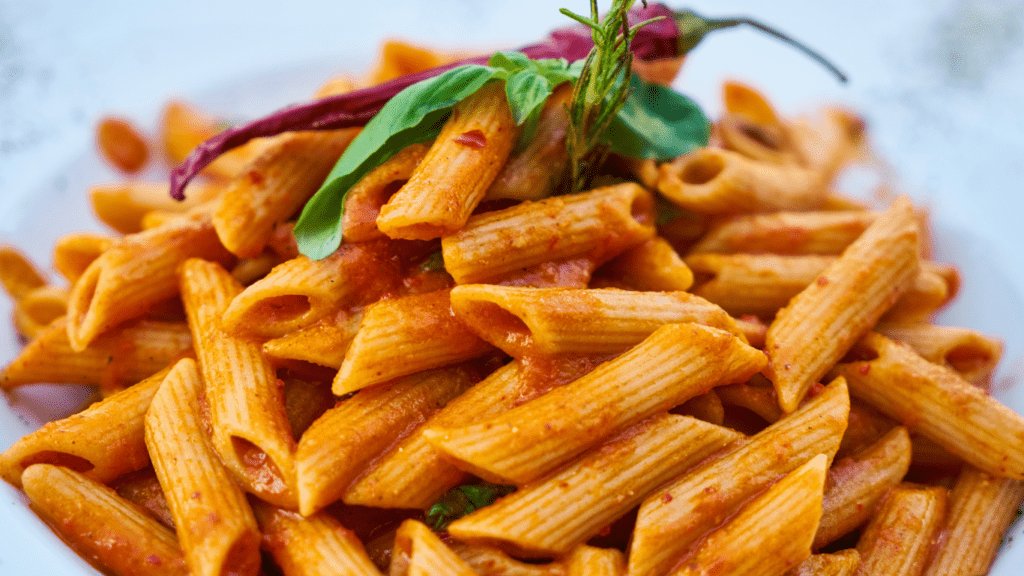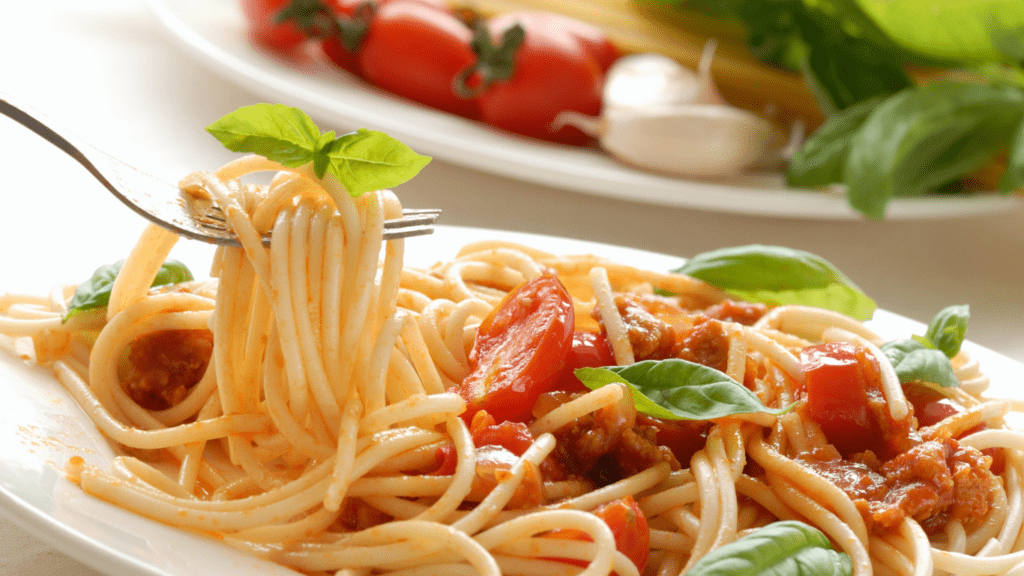Are you ready to elevate your pasta game with homemade goodness? In this guide, I’ll share expert tips for crafting the perfect dough and mastering the art of shaping homemade pasta.
There’s something truly special about the process of creating pasta from scratch – from the feel of the dough between your fingers to the satisfaction of twirling that forkful of freshly made noodles.
Whether you’re a seasoned home cook or a pasta-making novice, mastering the basics of homemade pasta is a rewarding culinary adventure. With a few key tips and tricks up your sleeve, you’ll soon be impressing friends and family with your delicious creations.
So, roll up your sleeves, dust your countertop with flour, and let’s dive into the wonderful world of making homemade pasta from scratch.
The Best Flour for Homemade Pasta
When selecting flour for homemade pasta, I always opt for high-protein options like semolina or durum wheat flour. These types of flour are perfect for pasta-making as they provide the necessary gluten structure for that ideal chewy texture.
It’s essential to choose a flour with a higher protein content to ensure your pasta dough holds together well during shaping and cooking.
I find that using semolina flour, with its coarse texture, adds a lovely golden hue to the pasta and gives it a slightly firmer bite. On the other hand, durum wheat flour, commonly used in Italian pasta-making, yields pasta with a satisfying al dente consistency.
Experimenting with different types of flour can lead to discovering your preferred taste and texture for homemade pasta.
Overall, high-quality flour is key to achieving the perfect homemade pasta. Whether you’re making delicate ravioli or robust fettuccine, using the right flour sets the foundation for a delightful culinary experience.
Choosing the Right Tools
When it comes to making homemade pasta, having the right tools can significantly impact the outcome. Ensuring you have the appropriate equipment can streamline the pasta-making process and enhance the quality of your final dish.
Types of Pasta Machines
Investing in a pasta machine can make the pasta-making process more efficient and enjoyable. There are two main types of pasta machines to consider:
- Manual Pasta Machine: This classic pasta machine requires manual operation but provides a hands-on approach to crafting pasta with precision.
- Electric Pasta Machine: An electric pasta machine automates the pasta rolling process, making it easier and quicker to create consistent pasta sheets.
Essential Utensils for Pasta Making
In addition to a pasta machine, several essential utensils can aid in the pasta-making process. Here are some key tools to have on hand:
- Mixing Bowls: Essential for combining the flour and eggs to create the pasta dough.
- Bench Scraper: Useful for cutting and portioning the dough into individual pieces.
- Rolling Pin: Helps flatten the dough if a pasta machine is not available or for shaping specific pasta types.
- Pasta Cutter: For cutting the pasta sheets into the desired shapes, such as fettuccine or spaghetti.
Having these tools at your disposal ensures a smoother pasta-making experience and allows you to achieve professional results in the comfort of your own kitchen.
Mastering the Pasta Dough
When it comes to mastering the pasta dough, using the right ingredients is key to achieving the perfect texture and flavor in your homemade pasta. Here are the essential components you’ll need to create delicious pasta dough:
- All-Purpose Flour: Use high-quality all-purpose flour for a versatile pasta dough that works well for various shapes and styles of pasta.
- Eggs: Fresh eggs are crucial for binding the dough together and giving it a rich flavor and vibrant color.
- Salt: Adding salt enhances the overall taste of the pasta dough, so be sure to incorporate a pinch into the mixture.
- Water: Water helps hydrate the flour and eggs to form the dough, so use it sparingly to reach the desired consistency.
By carefully selecting and combining these basic ingredients, you’ll be on your way to mastering the art of creating the perfect pasta dough for your favorite homemade dishes.
Shaping Techniques
When it comes to shaping homemade pasta, mastering various techniques enhances the presentation and texture of your culinary creations. Let’s explore some fundamental shaping methods that can elevate your pasta dishes to the next level:
- Roll and Cut: One of the classic techniques involves rolling out the pasta dough with a rolling pin and cutting it into desired shapes. This method is popular for creating lasagna sheets, fettuccine, or pappardelle.
- Hand-Cut: Hand-cut pasta allows for more rustic and irregular shapes, adding character to dishes like tagliatelle or orecchiette. Simply use a knife, pizza cutter, or bench scraper to cut the dough to the desired size.
- Filled Pasta: Crafting filled pasta like ravioli or tortellini requires precision and finesse. By placing small portions of filling on the dough, sealing it properly, and shaping it delicately, you can create delectable stuffed pasta parcels.
- Twisting and Rolling: Techniques such as twisting and rolling can be used for shaping pasta like fusilli or cavatelli. By rolling small pieces of dough against a ridged surface or your fingers, you can achieve unique shapes that hold sauces well.
- Press and Mold: Pressing and molding tools are handy for creating intricate pasta shapes like gnocchi or garganelli. These tools help imprint patterns on the dough, giving your pasta a professional touch.
Experimenting with different shaping techniques allows you to unleash your creativity in the kitchen and impress your guests with visually appealing and delicious homemade pasta dishes.
Cooking and Serving Your Homemade Pasta
When it comes to cooking and serving your homemade pasta, freshness is key. Once you’ve shaped your pasta dough using the various techniques discussed earlier, it’s essential to cook it properly to achieve the perfect texture and flavor.
I recommend cooking your homemade pasta in a large pot of generously salted boiling water. It’s crucial to ensure that the water is at a rolling boil before adding the pasta to prevent it from sticking together.
Cooking times may vary depending on the type and thickness of the pasta, but a good rule of thumb is to cook fresh pasta for around 2-6 minutes until al dente. Remember to taste-test a piece to ensure it’s cooked to your liking.
When serving your homemade pasta, simplicity is key. Opt for light sauces that complement the flavors of the pasta without overpowering them. A drizzle of good quality extra virgin olive oil, freshly grated Parmesan cheese, and a sprinkle of fresh herbs can elevate your dish to gourmet status.
To enhance the presentation of your homemade pasta, consider garnishing with additional ingredients like toasted breadcrumbs, chopped nuts, or a twist of freshly ground black pepper. These small additions can add texture and visual appeal to your dish.



 Founder
Nicoleine is the visionary behind Food Meal Trail, dedicated to inspiring healthier eating habits. With a passion for culinary arts and nutrition, she combines her expertise to provide readers with innovative meal ideas and cooking techniques. Nicoleine believes that food should be both nourishing and enjoyable, and she is committed to sharing her love for wholesome cuisine with the world.
Founder
Nicoleine is the visionary behind Food Meal Trail, dedicated to inspiring healthier eating habits. With a passion for culinary arts and nutrition, she combines her expertise to provide readers with innovative meal ideas and cooking techniques. Nicoleine believes that food should be both nourishing and enjoyable, and she is committed to sharing her love for wholesome cuisine with the world.
